PART TWO: Space trash & satellite traffic jams: how did we get here? The Improbability of the Newtonian Revolution
Isaac Newton was taciturn, strange, slow to give credit to others, and kind of a jerk. But he had a knack for pulling all the threads together and unlocking the universe.

Lately, when reading about how millions of orbiting pieces of space trash, some smaller than a Corn Flake, are jeopardizing future space travel and satellite launches, I have only one thought: “Too bad Isaac Newton was such a lousy sheep farmer.”
Because if only the young Newton had mended his fences, we might not be facing the woes unfolding over our heads for at least another century, maybe two.
Agriculture had been the lot in life reserved for the antisocial 17th-century Englishman who never had kids even though he was so often a dad — being “the father of modern science,” “the father of physics,” and the “father of calculus and optics” — as well as the man who devised the theory of universal gravity, which he claimed came to him when an apple fell not far from his head.
Isaac Newton would probably never have devised his laws of motion and gravity — and surely would never have been able to broadcast news about them authoritatively to the world — if he hadn’t so thoroughly screwed up his family’s farming affairs, wracking up so many fines from acts of ovine destruction, that his widowed mother, who’d pulled him out of high school to run the farm in Lincolnshire, begrudgingly sent him packing off to Trinity College in Cambridge.
This was unusual — few sons of illiterate farmers made it to college back then — and it was the first of many improbabilities in Newton’s life, one that gave him the tools to stitch together seemingly random phenomena of our physical world and the many threads of novel ideas floating around into a dazzling explanatory tapestry. And then he embroidered on top of it.
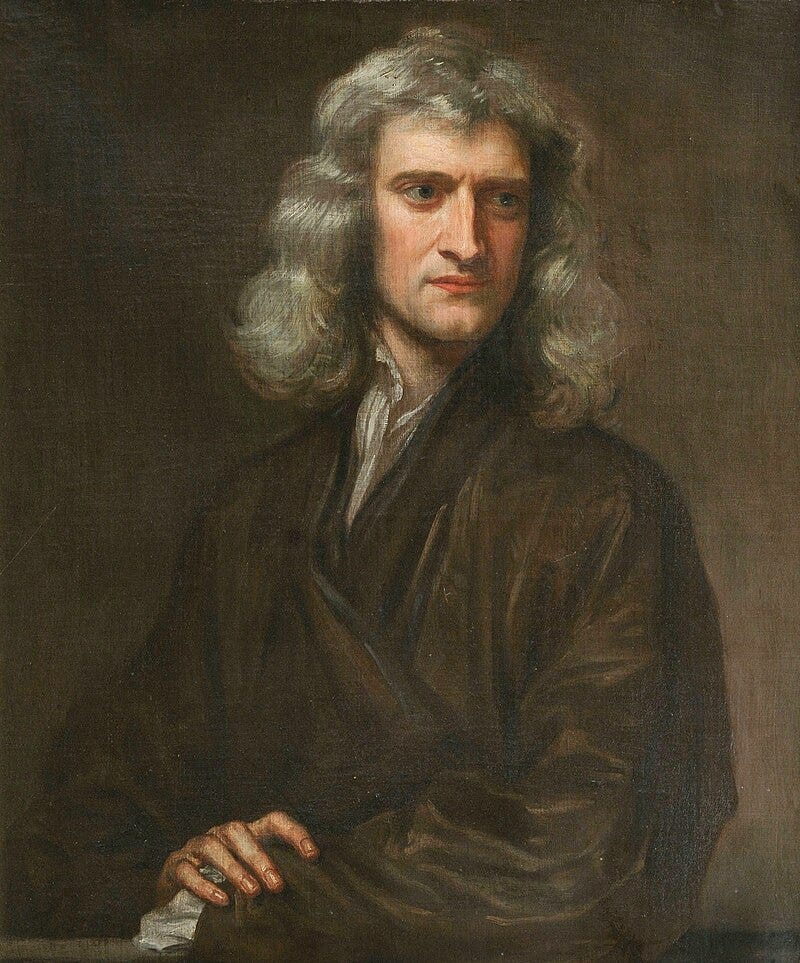
Surprisingly, Newton did not receive a top-notch scientific education in Cambridge. Like most universities of that era, the classes on the physical sciences at Trinity College were woefully behind.
Even though Copernicus had written about a sun-centered planetary system in 1543, that still wasn’t taught at Trinity 120 years later. Even though Kepler published his laws on planetary motion in 1609 — showing that planets moved in elliptical orbits, not circular — his ideas were also ignored and Galileo’s telescope observations of Jupiter’s moons and the phases of Venus were skimmed over as well.
Students instead learned Aristotle’s antiquated views of a geocentric universe.
Nevertheless, Newton read works of Copernicus, Galileo, and Kepler on his own in between experimenting with prisms, and shortly after graduating from Trinity, the ideas converged into a spectacular creation in his head during a manic two years back at the farm in Lincolnshire, where he’d gone to avoid the plague sweeping London and Cambridge.
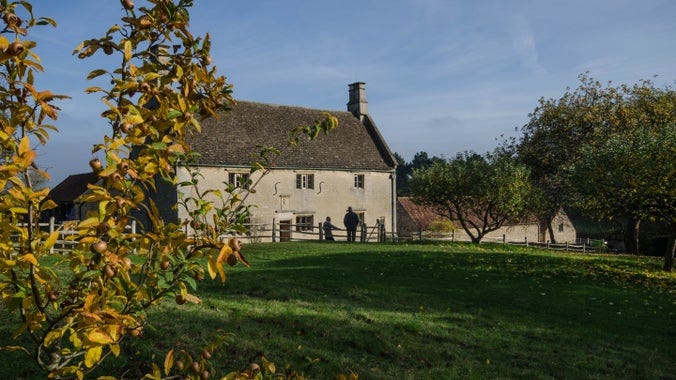
This was the second improbability of Newton’s life — that he figured out so much, so quickly and did it all on his own, rarely talking to anyone or even writing many letters. Though he told no one at the time, except maybe some sheep, during 1665 and 1666, Newton devised his law of universal gravitation — calculating how all bodies exerted a gravitational pull on each other, which explained not only why apples fell but why the moon stayed in the sky and created ocean tides on Earth. He developed an understanding of optics, including that white light contained all the colors of the visible spectrum; he devised his three laws of motion, and then to explain it all, he invented calculus — the math of measuring change.
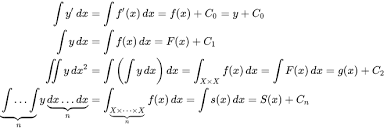
And Newton kept it all to himself, writing pages and pages of notes filled with diagrams and calculations. All the knowledge that he’d synthesized and reformulated and built into an overarching explanation of the mechanics of our physical world could have, and probably would have, been entirely lost had not yet another improbability entered in.
Even though Newton had not been particularly brilliant as an undergraduate, when he returned to Cambridge after the plague lockdown lifted, he discovered there were unexpected openings for fellowships because several young scholars had been killed in fluke accidents.
So Newton applied — and landed a post as a math fellow, which brought a modicum of respect and enough money for his research, though he was also required to teach some classes.
Most students, however, didn’t understand what the heck he was talking about. The young mathematician with long blonde hair often stood before empty classrooms, lecturing only to the walls. Nevertheless, he had ample time for his research and building cutting-edge equipment — like his new reflecting telescope, which he cobbled together on his own, even grinding the mirrors required for the contraption that allowed seeing further into the heavens without distortion — and at a much-reduced size. While many telescopes of the day were six feet long or more, the reflecting telescope allowed telescopes to shrink to as little as six inches.
In 1672, Newton was invited to London to present the device at The Royal Society — short for the Royal Society for Improving Natural Knowledge — a new king-approved “learned society” whose members included bigwigs like Christopher Wren, Robert Boyle, and Robert Hooke.
The Royal Society was already making a name for itself, having published Micrographia, a beautifully illustrated book by Hooke, who after building a compound microscope, inspired fear and awe among humans everywhere with his detailed drawings of tiny bugs, including fierce-looking fleas and prickly lice.
Hooke soon became the society’s curator in charge of organizing experiments. One popular amusement for the gentlemen thinkers was studying their squiggling sperm under the microscope for hours. Sometimes they transfused blood from a cow to a human just for kicks.
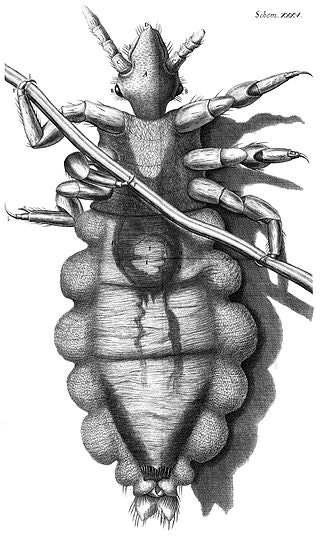
Even though Newton loathed socializing and public speaking, his presentation of his reflecting telescope was so impressive that he was soon thereafter invited to join the Royal Society, an invitation he happily accepted.
Almost immediately, troubles began. Shortly after he’d become a member, Newton submitted a paper on the nature of light — noting his experiments with prisms and hypothesizing that white light contained all the visible colors. After it was published in the Royal Society’s journal, several scientists, including Hooke, questioned his findings.
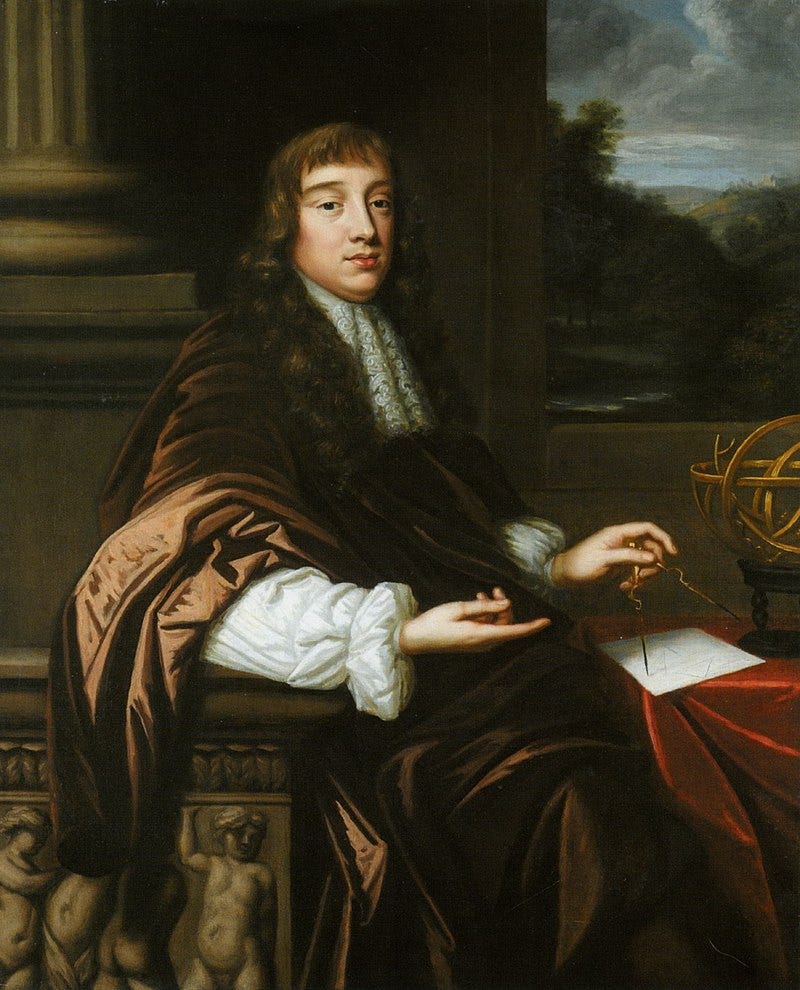
Livid that his work was being subjected to criticism and scrutiny — which is, of course, crucial to scientific progress — Newton withdrew into his secret hobby — alchemy, a subject about which he wrote over a million pages.
The likelihood of Newton publishing anything again hovered at near zero until Edmond Halley — of Halley’s Comet fame — became a member of the Royal Society.
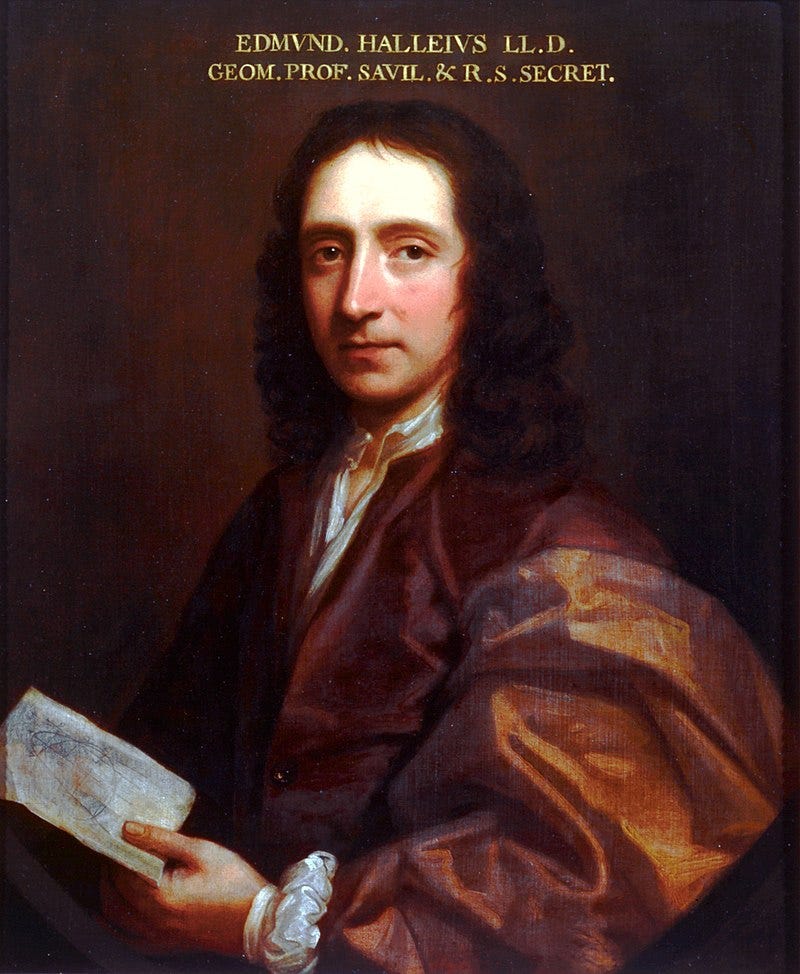
Pondering with Wren and Hooke what shape was taken in the orbital paths of planets, the young, charming Halley approached Newton with the question. Newton replied that they traveled in ellipses — which alert readers will note was precisely Kepler’s assertion almost 80 years earlier — but Newton said he had the intricate mathematical formulations that illustrated why this was so, and he later sent Halley a 9-page paper on the subject.
Enthused, Halley encouraged him to write a book on the matter — promising to foot the publishing bill. In 1687, Philosophiæ Naturalis Principia Mathematica — The Mathematical Principles of Natural Philosophy — was published in Latin. The tome laid out theories for the movements of large bodies — what would become Newton’s three laws of motion — as well Newton’s Law of Universal Gravitation — including explanations of how the moon pulled on water, creating tides.
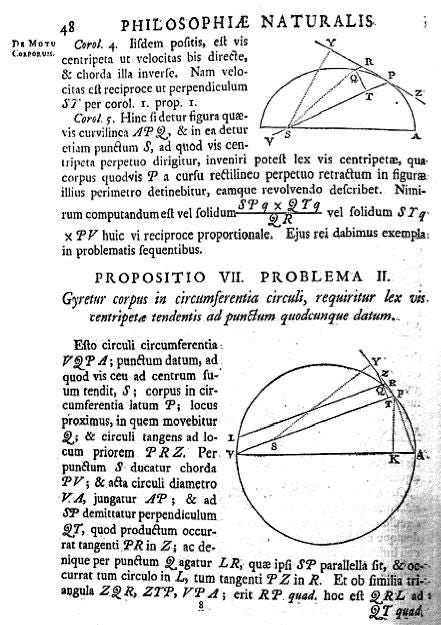
In Principia, as it was known, Newton in one book validated the ideas of Copernicus, of Kepler, of Galileo and snapped the pieces into place providing a working model of our world and how objects physically acted and reacted within it.
The framework provided in Principia was one of those Neil Armstrong “giant leap for mankind” moments — and one that yielded the formulas that fueled the Enlightenment, helped to power the Industrial Revolution, and were used to propel Neil Armstrong and thousands of satellites into outer space.
And by doing so Newton yanked the old world into the new, kickstarting human civilization — and ultimately speeding up everything, though it didn’t happen overnight.
Even though Newton’s ideas were not immediately embraced — as usual, many had no idea what he was talking about — it was quickly recognized as the most important publication of the time, and it is arguably still the most important scientific book in history.
Predictably Robert Hooke was quick to criticize Newton’s book, this time for giving him no credit for assorted ideas, which Hooke claimed, perhaps dubiously, that he influenced. In response, Newton withdrew even further from the Royal Society, delving deeper into the clandestine world of alchemy, suffering nervous breakdowns and entering into a period of paranoiac lunacy believed caused by the alchemical potions he was breathing in, including mercury.
His alchemical pursuits he kept secret throughout his life, his occult fascination obscured until 1936 when Sotheby’s auctioned off his unpublished scribblings — and his death mask — with famous economist John Maynard Keynes the highest bidder, and soon telling the world of this unknown mystical side of the father of modern science, who was knighted in 1705.
To judge by his papers, Newton never did make a metaphysical breakthrough nor did he concoct the so-called “philosopher’s stone” — the alchemical substance that could transmute lead into precious metals. But the man who so transformed human understanding of how the world works did eventually find a means to turn his ideas into gold. In 1690, he became the government’s Master of the Mint, creating new counterfeit-resistant coins and becoming quite wealthy in the process.
But he still hadn’t reached his apex. With the 1703 death of Robert Hooke, who had openly criticized his theories about white light and prisms, Newton readied his book Opticks for publication, shedding new light in that arena as well. What’s more, after Hooke’s death, the Royal Society offered Newton the post of president, which he accepted, giving him a powerful platform to share his ideas with the world — a final unlikelihood that only amplified Newton’s voice and ideas.
Oddly, just after Newton moved into the president’s office, the portrait of Robert Hooke that for decades had hung in the salon, mysteriously disappeared.
When he died in 1727, Sir Isaac Newton was given a sendoff worthy of a king and laid to rest in an ornate tomb in Westminster Abbey.
The inscription reads:
Here is buried Isaac Newton, Knight, who by a strength of mind almost divine, and mathematical principles peculiarly his own, explored the course and figures of the planets, the paths of comets, the tides of the sea, the dissimilarities in rays of light, and, what no other scholar has previously imagined, the properties of the colours thus produced. … Mortals rejoice that there has existed such and so great an ornament of the human race!
Not bad for a shoulda-been sheep farmer.



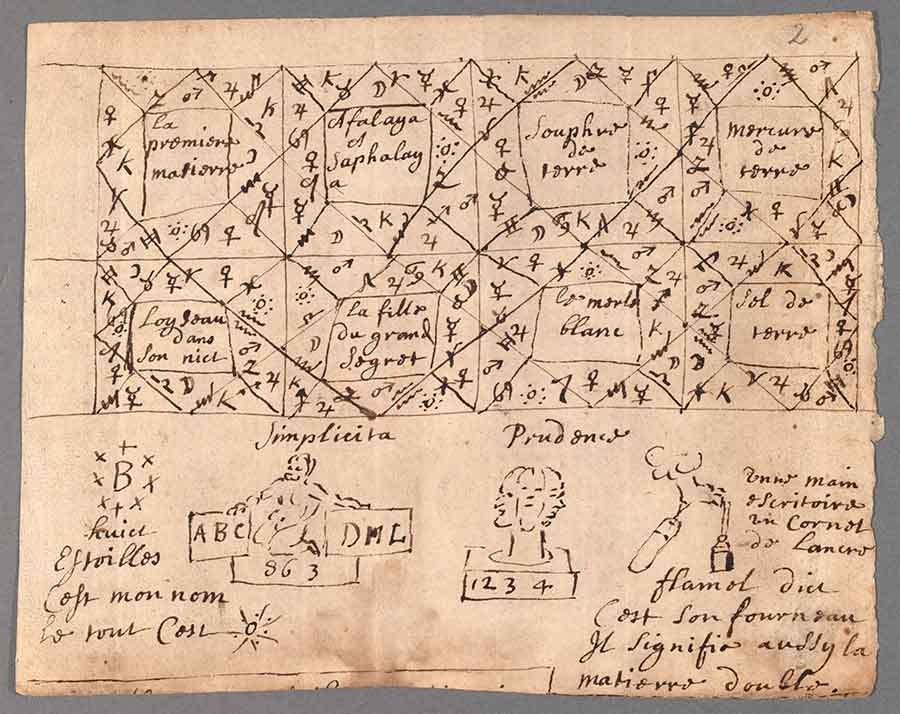

I learned something! I have no idea about Newton as Master of the Mint. If his breakthrough came from a lockdown, I have undue expectations that something good will come after our recent covid lockdown. The first thing that springs to my mind is how the Digital Revolution has finally been introduced in the world of work. So, in Manhattan, they have no idea what to do with all vacant offices and local commerce real estate, and the ones open for business have shoplifting problems skyrocketed.